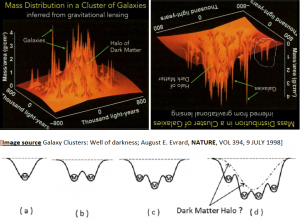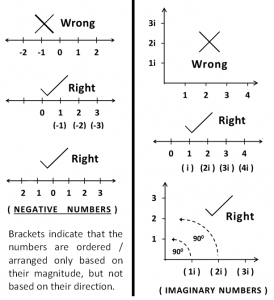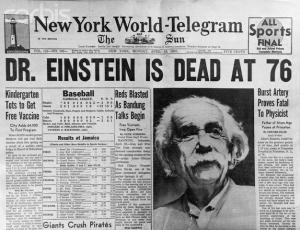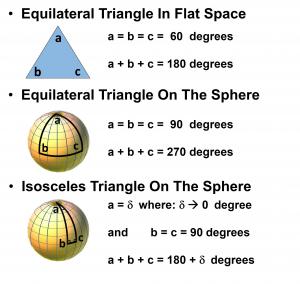RRCAT Physicist challenges the Standard Model of Cosmology
— Galileo Galilei
INDORE, MADHYA PRADESH, INDIA, July 20, 2023/EINPresswire.com/ — A Nature Astronomy (2020) paper has claimed with 99% confidence level that our universe is closed. Another paper claims betting odds of 2000 ∶ 1 against an open, flat and infinite universe, thus mortally wounding the Standard Model of Cosmology, but unifying entire physics. The widely held understanding of an infinite, three-dimensional flat cosmos is incorrect, and our universe is indeed closed and finite [#Link1]. Not only that, but the currently accepted faulty model is why the two pillars of Physics, General Relativity and Quantum Mechanics, are incompatible. This is what Subhajit Waugh, a physicist from the Raja Ramanna Centre for Advanced Technology (RRCAT), Department of Atomic Energy, Government of India, has proposed in a landmark paper on Quantum Mechanics and General Relativity [#Link2]. It is a view that could change a significant part of physics and cosmology as we understand it [#Link3].
General relativity (GR), which explains events on the greatest cosmological scale, and quantum mechanics (QM), which describes phenomena on the tiniest, submicroscopic scale, are the two cornerstones of contemporary physics. But there are bitter conflicts between these theories. The main objective of physicists around the world has been to find a means to harmonize the two for many decades.
The reality, according to Mr. Waugh, is different. The universe’s shape is a 3-dimensional hyper-surface of a (hyper) balloon. If this shape is adopted, then both GR and QM fit together like pieces in a jigsaw. A unification of these two theories solves most of the outstanding conflicts from dark matter to dark energy, to the requirement of a fifth dimension in physics (but which experiments and observations do not allow).
Explaining how the whole scientific world got to this position, Mr. Subhajit points out that:
“We (the scientific community) have made a series of mistakes in our mathematics, our physics, and our cosmology. And this is what I can’t stress enough; without making the corrections (which I have made) to our historical mistakes, no scientist will ever be able to unify fundamental physics and cosmology.”
The standard model of cosmology is based on the Friedmann equations, which are derived from Einstein’s field equations of gravity for the Friedmann-Lemaître-Robertson-Walker (FLRW) metric. The Minkowski spacetime (MST) metric, which can explain all aspects of special relativity (including time dilation, length contraction, and relative simultaneity), describes spacetime far from massive objects. Mr. Waugh contends that the currently accepted mathematical interpretation of the MST metric (as well as the FLRW metric) is incorrect, which has prevented cosmologists from deriving the correct shape and size of the universe. The temporal parts of both metrics are identical, and either metric can be used to determine the shape and size of the universe if the mathematical interpretation is corrected. The universe is like the 3D hypersurface of a 4D hypersphere. Taking the radial expansion velocity of the universe to be equal to the speed of light, c (as dictated by spacetime equations), and the age of the universe as 13.8 billion years, the value of the Hubble constant obtained using this model (71.002 km/s/Mpc) agrees well with the accepted values (69.8 and 74 km/s/Mpc calculated by two different methods). The MST metric and Hubble’s law both say the same thing, which demonstrates that Waugh’s model is correct.
Mr. Waugh proves the curvature of the 3 dimensional hyper-surface using the center of the mass equation and the Minkowski SpaceTime equation as his primary instruments. He claims that cosmologists should have probed the curvature of 3D space by considering the sum of solid angles rather than plane angles (of the Cosmic Microwave Background spots). Mr. Waugh further demonstrates the existence of two different frames of reference/viewpoints. Each perspective sees the universe uniquely, but it is essentially this that enables the unification of QM and GR.
The key to this new understanding, according to Mr. Waugh, and the key to unifying both GR and QM, is understanding that there are two viewpoints; the true center of the universe viewpoint (nature’s perspective) and our viewpoint, which he equates to that of a creature trapped inside the wall of a hyper-ballon, but free to move along the wall.
“From our perspective, the radius of the universe is an impossible direction (which forces us to use imaginary numbers), and hence it is a temporal dimension. But from the center of universe perspective, the radius is a real dimension and hence is a spatial dimension. Thus, time and space dimensions exchange roles. The radial expansion of the universe appears as the passage of time from our viewpoint.”
Explaining how his findings and new framework reconcile these two significant theories, Waugh notes that based on his proposed new universe shape: “Both phenomena are like two sides of the same coin. Relativity is inside the light cone phenomena (since nothing can travel faster than light), while Quantum Mechanics is outside the light cone phenomena (allowing instant communications in ‘quantum entanglement’ experiments). Both are dictated by the scale (i.e., whether we use classical/human scale or sub-atomic scale).”
The findings have significant ramifications for several theories, including wave-particle duality, Lagrangian-Hamiltonian duality, quantum entanglement, as well as the crucial conservation principles of Physics.
[Mr. Waugh claims that in an upcoming paper, it will be shown that the Schwarzchild metric is also a dynamic 3D hypersurface (moving with a velocity c in the fourth dimension), just like the Minkowski SpaceTime metric. The Flamm paraboloid is an accurate mathematical representation of the Schwarzchild metric (contrary to popular belief) if the dynamic nature is considered. Hence, the rubber membrane/sheet model (which is used to teach General Relativity in schools and colleges) should be taken literally rather than as an analogy, provided that the dynamic nature is also assumed. The dynamic nature of the 3D field-particle hypersurafce causes the flow of time (which appears to vary with the strength of the gravity field due to varying slopes of the Flamm paraboloid at different distances from the massive object). A hint of the (opposing) effects of this slope on spatial stretching scale and gravitational time dilation lies hidden in plain sight in the Schwarzchild metric. The scale factors in the temporal and radial part of the metric are negative inverse of each other. This sort of negative inverse relation is seen in the slopes (m1 and m2) of two perpendicular lines (m1.m2 = –1), which suggests the resolution of the slope into cos and sine components. Picturing gravity as stretching of 3D hypersurface rather than warping of 4D spacetime provides a key to unlocking the still mysterious aspects of gravity. The impact of a better understanding of gravity on the subjects of dark matter, cosmic structure, and cosmic evolution shall also be addressed.]
About Subhajit Waugh:
Mr. Subhajit Waugh works as a scientific officer with the Indian government’s Department of Atomic Energy at the Raja Ramanna Centre for Advanced Technology. He graduated top of his class with a Master’s in Physics from the National Institute of Technology in Rourkela in 2003. His research interests include solving the remaining riddles of the cosmos and fusing cosmology and physics into a single ‘Theory of Everything’. He received the esteemed NCERT National Talent Scholarship in 1996.
subhajit waugh
RRCAT (Raja Ramanna Center for Advanced Technology)
email us here
Visit us on social media:
YouTube
Other
Mr. Subhajit Waugh appeals the audience to watch and share the United Nations Anthem video (with lyrics). The World needs the UN now more than ever before.
![]()

























